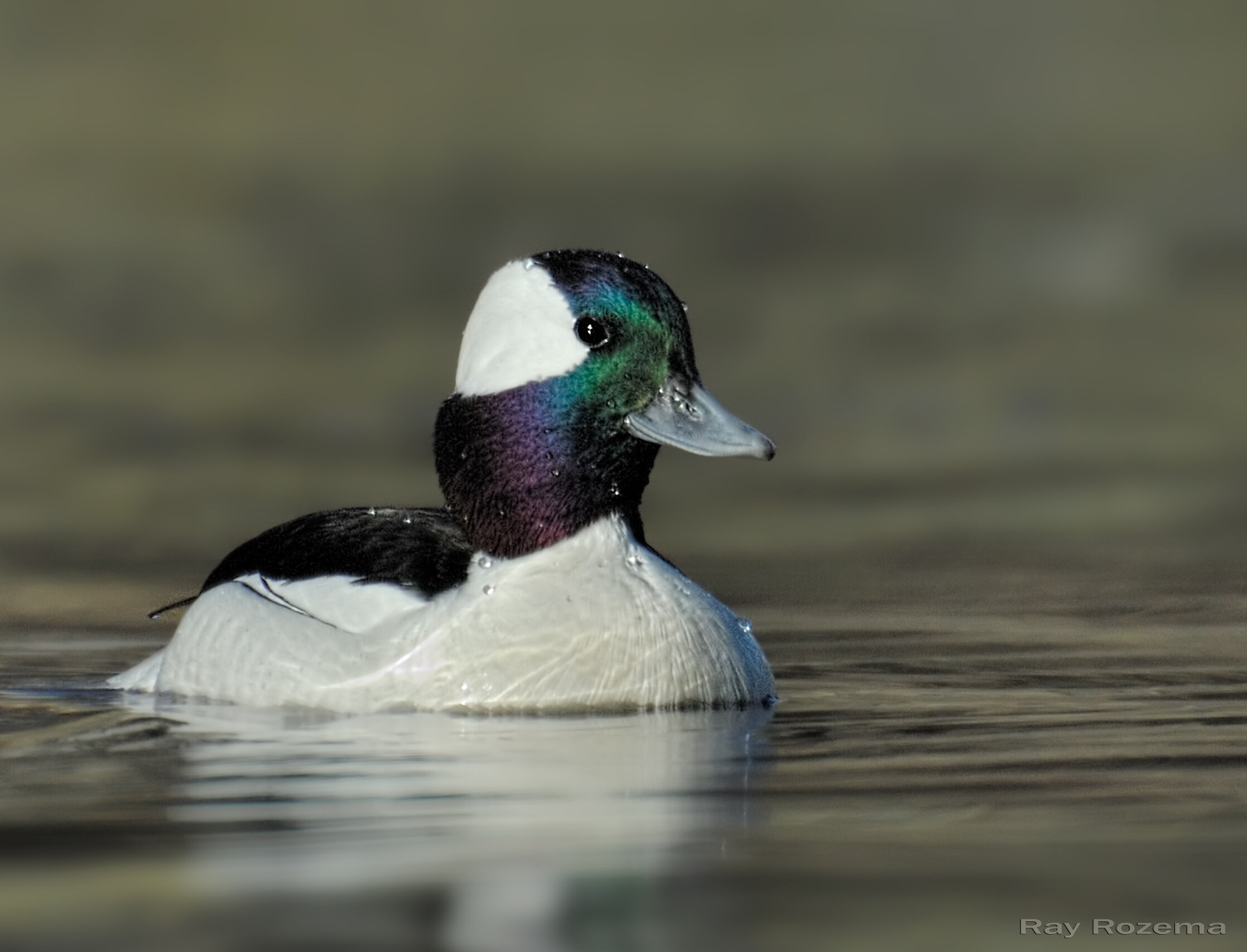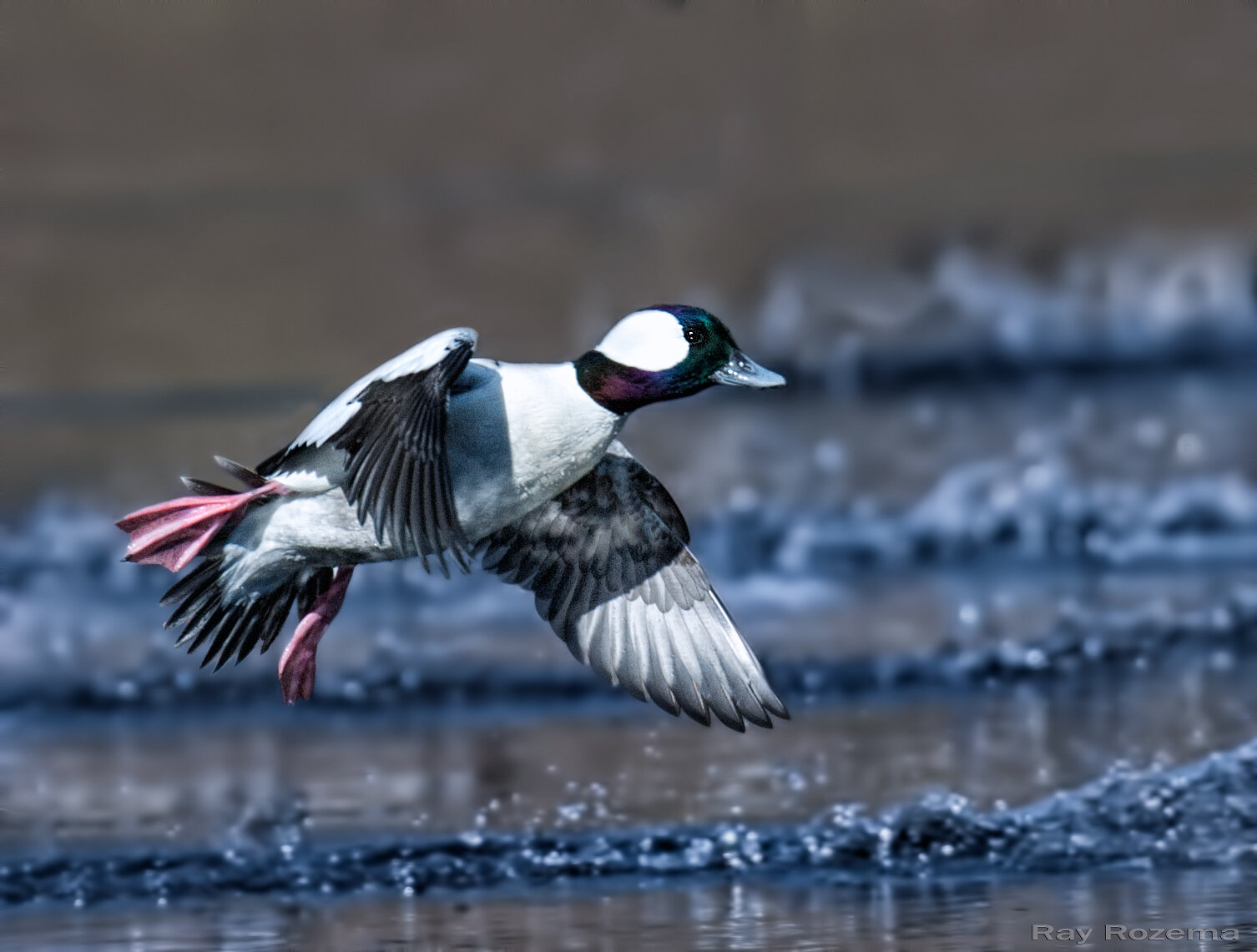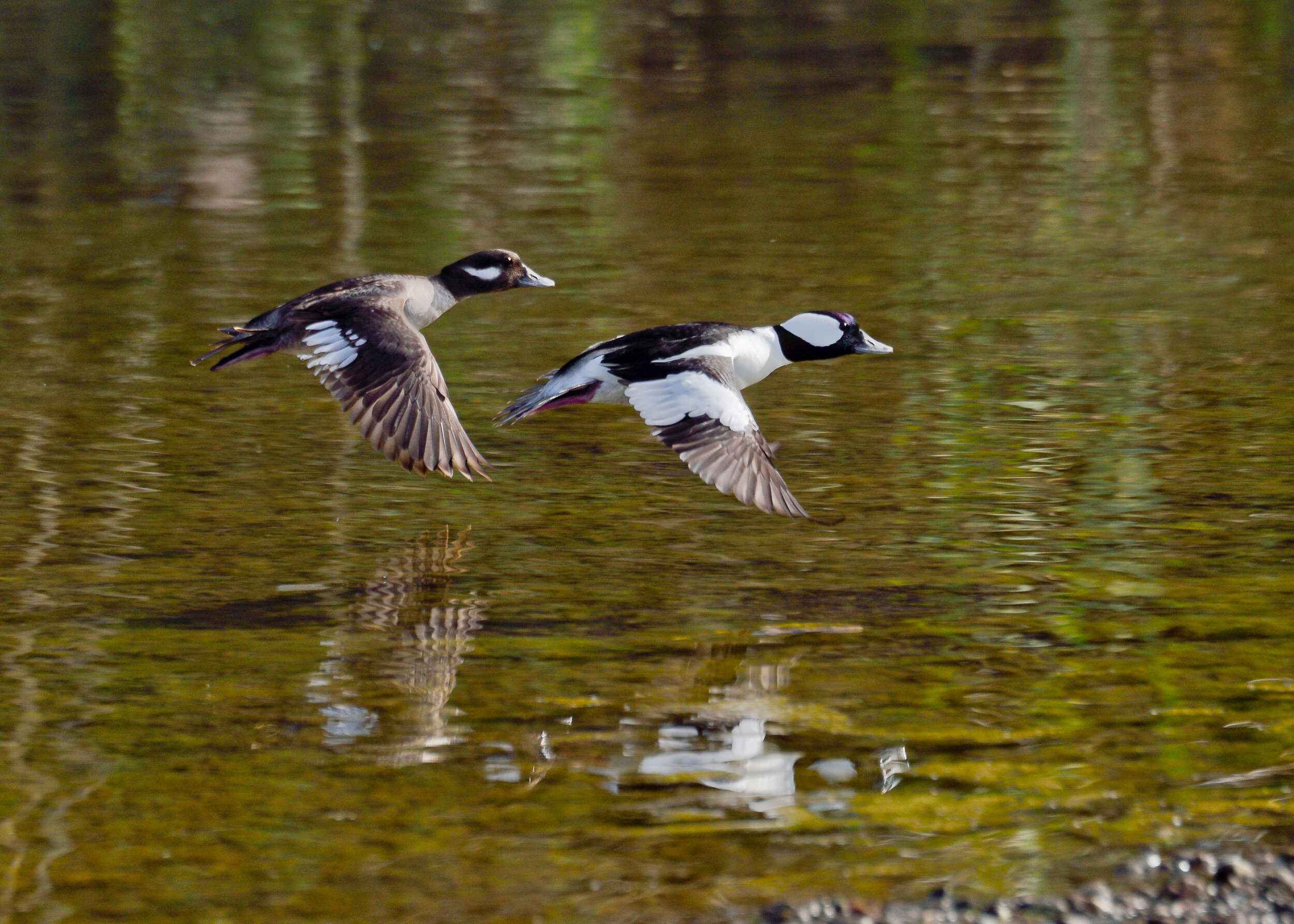Male Bufflehead, Image by Ray Rozema
This month let’s learn about the smallest diving duck found in North America, the Bufflehead. Buffleheads were given this name because the male Bufflehead’s puffy head is similar in shape to that of a buffalo’s head. Buffleheads are excellent swimmers, both on the surface and underwater. In addition, they are one of the fastest waterfowl. They have very fast wingbeats and can travel up to 48 miles per hour! When Buffleheads are swimming in the water, they can take flight quickly, unlike other diving ducks.
Buffleheads can be found in the Sacramento region from late summer to early spring. They are migratory birds (birds that travel to different areas depending on the season) and usually fly at night. The spring migration for Bufflehead starts in April or May. Their destination is either Alaska or Canada, where they claim their nest sites. After the nesting season is over, Buffleheads again take flight for their fall migration and head for warmer regions. They spend their winters in the United States, Mexico, or the western coast of Canada. Buffleheads are related to and are in the same family (Bucephala) as goldeneyes.
What do Buffleheads look like?
Male bufflehead, Image by Ray Rozema
Buffleheads have a compact shape, short wings, tiny bills, and fairly large heads. However, the males and females look quite different from each other. Male Buffleheads are slightly larger and have a large white patch that starts behind the eyes and wraps over the top of their head from cheek to cheek. The rest of their head can appear black. At certain times, however, this dark area on their heads and necks is shimmery purple and green! This is because the feathers in this area are iridescent (having glossy and luminous colors that seem to change when seen from different angles). The bodies of male Buffleheads are mostly black and white which makes them very noticeable due to the contrasting colors. Males also have large white wing patches on black wings, have gray underwings, and their legs and feet are tannish-pink.
In contrast, Female Buffleheads have dark brown heads, grayish-brown wings and backs, grayish-brown flanks or sides, gray feet and legs, and pale undersides. They have a small, white patch behind their eyes and a small, white patch on their wings. Juvenile males resemble adult females for about one year after birth.
In the summer, the male Bufflehead leaves the nest site and the female must care for the nestlings alone. This is a period of time when males molt (to lose old feathers and replace with new feathers). Male Buffleheads lose their colorful breeding plumage (or feathers) and temporarily look more like females. This temporary plumage change is called eclipse plumage. Having less color during this time makes it easier to hide from predators. This is fortunate because there is a three-week period during molting when male Buffleheads are unable to fly.
Where do Buffleheads live?
Buffleheads, Image by Daniel Lee Brown
Buffleheads are found in lakes, harbors, flooded wetlands, estuaries, reservoirs, slow-moving rivers, and sheltered bays. In the winter, Buffleheads live in protected coastal areas or open inland waters. During nesting season, Buffleheads prefer to find nest sites that are located in small wooded lakes and ponds in aspen groves or mixed (coniferous and deciduous) forests.
Buffleheads are tree cavity nesters (or “hole-nesting”) ducks. Each year, the nest site is chosen by the female. The site may be the same as was used for the previous nesting season. Nests are usually 2-10 feet above ground; but they can be much higher. It is quite interesting that Buffleheads actually look for old nesting cavities of a specific woodpecker, the Northern Flicker, to nest in. Because Buffleheads are very small ducks, they are able to fit into these small Northern Flicker holes and hopefully stay safe from larger predators that aren't able to enter the hole. They will sometimes nest in old Pileated Woodpecker nest cavities or nest boxes. The Bufflehead female makes only one improvement to the woodpecker hole. She lines the inside of the hole with her own down feathers. The female lays eggs once a year. She will incubate the eggs (or sit on and keep the eggs warm) for approximately one month. 1-2 days after hatching, the mother encourages the nestlings to jump out of the cavity. The mother will then lead her young directly to a body of water. At first, very young ducklings will simply dabble at the water’s surface to locate food. With their mother protecting and guiding them, young ducklings very quickly learn how to dive and find food underwater by themselves. This takes place in just a few days! Young birds will take flight approximately 50-55 days after hatching. In two years time, these young Buffleheads will be ready to prepare their own nest sites.
What do Buffleheads eat?
Male Bufflehead, Image by Daniel Lee Brown
The diet of Buffleheads varies by both season and their habitat. They are very active ducks and seem to be constantly diving in search of food. Not only do they find their food underwater, they also eat their food while still submerged. Buffleheads eat aquatic (water) insects, mollusks (especially snails and clams), crustaceans, and occasionally small fish. They also eat underwater plant matter in the fall, such as the seeds from pond weeds and bulrushes. Buffleheads are found either in pairs or small groups of no more than ten. Some researchers have witnessed a few Bufflehead in each group watching for predators while the others are actively diving for food. Another report, however, said that all members of a small group can be diving at the same time.
Male bufflehead, Image by Daniel Lee Brown
What do Buffleheads sound like?
The female’s Bufflehead’s call is known to be a barking, croaking, “throaty” cluck, or hoarse quack. The male’s call is a high-pitched squeal, squeaky whistle, or occasional growl. However, Buffleheads are frequently silent. You can listen to Buffleheads now.
These calls of the Bufflehead are from xeno-canto. More Bufflehead vocalizations can be found at xeno-canto.org/species/Bucephala-albeola.






